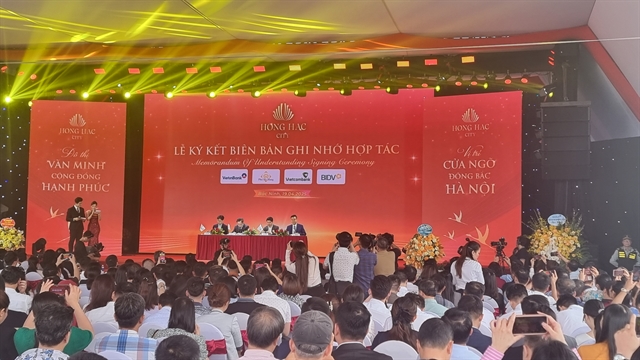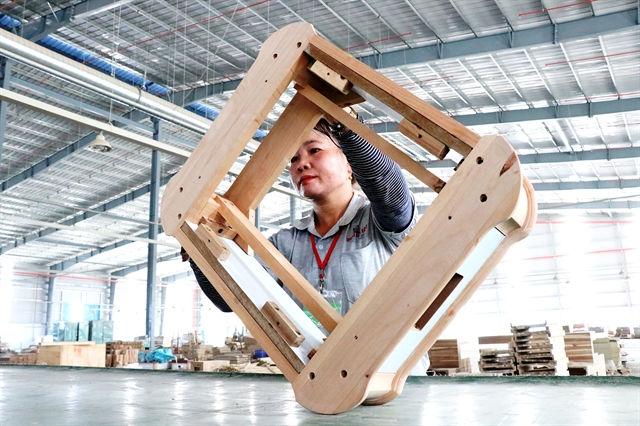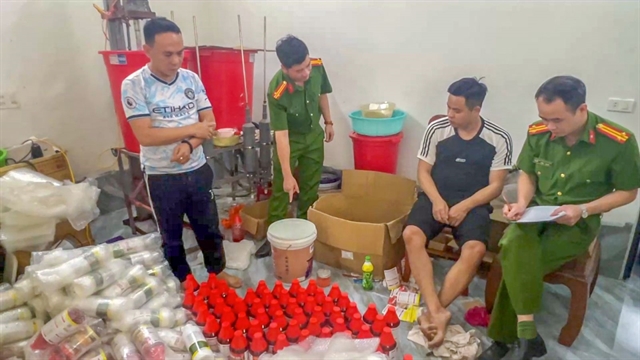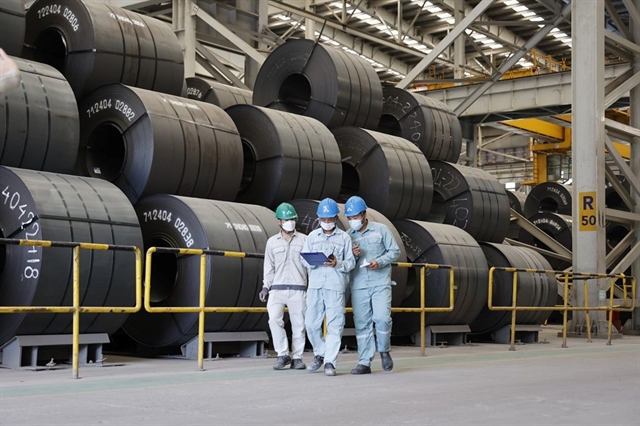

Việt Nam’s Bạch Mai Hospital, one of the leading hospital in the country, has enjoyed a successful trial run using a minimally invasive alternative to thyroid nodule open surgery.
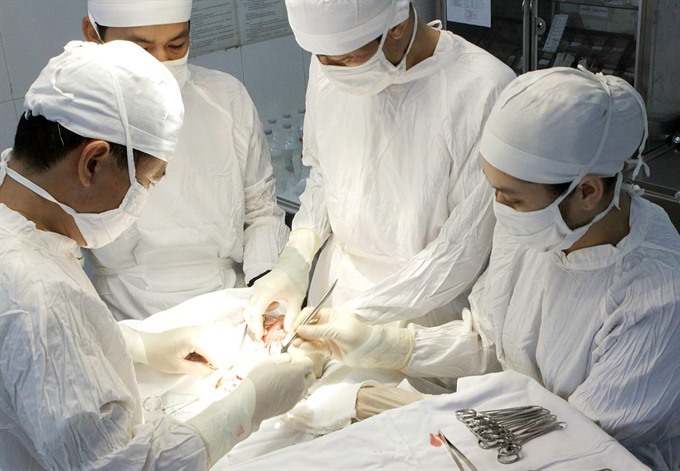 |
| An open surgery to treat goitre, a common condition in Việt Nam. The newly adopted radiofrequency ablation (RFA) technique offers a less invasive alternative for goitre patients. — VNA/VNS Photo Dương Ngọc |
HÀ NỘI – Việt Nam’s Bạch Mai Hospital, one of the leading hospital in the country, has enjoyed a successful trial run using a minimally invasive alternative to thyroid nodule open surgery.
Radiofrequency ablation (RFA) is a medical procedure that removes tumours or other dysfunctional tissues by using the heat generated from medium frequency alternating current (350-500 kHz). The technique has developed so that radio frequency currents can specifically aim at targeted tissue, lessening collateral damage.
Đàm Thị Ngân, 42, a doctor of the Traditional Medicine Hospital in the northern province of Tuyên Quang, struggled with the unsightly lump in her neck. Over the course of six years, Ngân multiple times considered the idea of getting surgery to remove the goitre, but kept hesitating out of fear that surgery might result in complications to her larynx as well as ugly scars, so she opted to stick with purely medicine treatment. However, the goitre kept growing larger, pressing into her windpipe and making it hard to breathe.
At this point, she came to Bạch Mai hospital and got all the necessary examinations a few months ago. The tumours’ result came out benign, and doctors recommended the newly adopted RFA technique.
Ngân said that during the procedure, doctors only used local anaesthesia. In fact, she could converse with doctors without much difficulty. In addition, hospitalisation wasn’t needed; she left for home shortly after the procedure was finished.
Follow-up examinations did not reveal any abnormalities or complications either.
“No one could tell by looking that I had gone through any procedure to get the goitre removed,” Ngân said.
Dr Ngô Lê Lâm, from the hospital’s Faculty of Radiology, said Ngân’s case is just one among the 150 benign goitre patients that the Faculty of Radiology at the hospital has treated since it started implementing RFA treatment in April last year.
According to Phạm Minh Thông, deputy director of the Bạch Mai Hospital, head of the Radiology faculty, the procedure was implemented for the first time in South Korea in 2002 and was soon deployed throughout many other countries. Now, 50 per cent of thyroid tumour removal is done via RFA in place of the more invasive open surgery or endoscopic surgery.
“With this technique, thyroid tumour as large as 5cm will gradually disappear on its own, leaving behind no scars or discernible marks on the skin,” Thông said, adding that “Usually, a month after ablation, the tumour size will decrease by 30-50 per cent, then by 50-80 per cent in subsequent months. With oversized tumours, or larger than 3cm, a second or third ablation might be performed.”
However, RFA technique is only amenable to patients with benign tumours. The confirmation of whether the patient’s thyroid tumours are benign or not must be done via two cell tests as well as ultrasound imaging, he added.
The other advantage of RFA is that each procedure takes only 30-45 minutes followed by one or two hours of further observation, Thông said.
Thyroid nodules, or goitre, are noticeably abnormal growths of thyroid cells formed in the thyroid gland located at the lower part of the neck. In most cases, they are benign. However, in cases where the tumours are malignant – or cancerous – in nature, which are more frequently observed in patients below 20 years old or above 45 years old, immediate surgical removal of the entire thyroid gland together with lymph nodes is standard practice.
According to Ministry of Health’s 2016 data, on average, 115,000 goitre patients are examined and have received treatment for their condition each year. The occurrence of goitre in northern mountainous region is quite high, staying at 30-40 per cent, and shooting up to 80 per cent in certain ethnic communities in more remote areas. The occurrence of the condition in Mekong Delta region is a bit lower, hovering somewhere between 20 to 30 per cent, while in the northern Red River Delta, the rate is low – 6 to 10 per cent. — VNS

